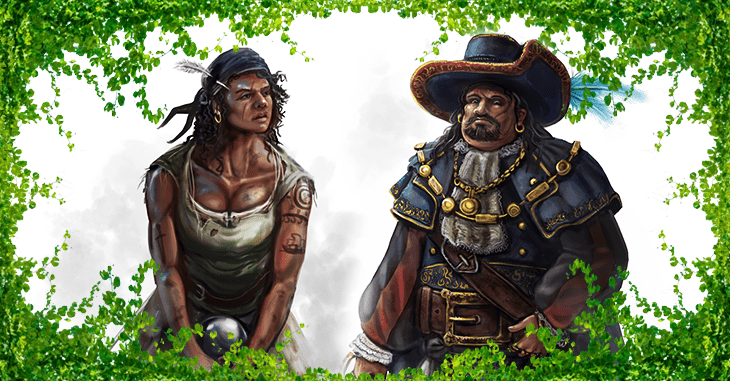The world of tabletop games is a thriving arena of creativity, fueled by publishers of all sizes, governed by different needs and portraying different realities.
From industry giants like Asmodee to passionate one-person outfits, each entity navigates a unique landscape with distinct challenges and opportunities. Understanding these disparities is crucial for aspiring designers and even established creators looking to chart their course. What’s best for you? Should you go indie or should you join a bigger, more established publisher? So, let's embark on a deeper dive into the vastly different landscapes of big vs. indie tabletop game publishers.
Building the Foundation: Resources and Reach
Goliaths in Action: Established publishers operate like well-oiled machines. Large, specialized teams oversee development, marketing, distribution, and manufacturing, ensuring a smooth journey for a game from its earliest prototype stage to finished product on store shelves. Their extensive networks encompass distributors, retailers, reviewers, and media outlets, granting them wider market access and greater visibility. Giants like Fantasy Flight Games or CMON benefit from economies of scale, allowing them to invest in high-quality components like metal coins and intricately sculpted miniatures, enhancing the player experience.
David's Hustle: For indie publishers, every step in the process demands resourcefulness and adaptability. Design, graphic design, marketing, even shipping might fall on one individual or a small team, requiring a nimble, multi-tasking approach. Resources are often scarce, necessitating bootstrapping from personal savings or launching crowdfunding campaigns to raise capital. Reaching an audience demands constant effort, with active online presence, participation in conventions, and strategic social media engagement becoming essential tools. Components might be simpler, relying on cardboard tokens and wooden pawns, but innovation and artistic design can compensate for the lack of lavish materials.
Target Audience: Catering to Preferences
Giants and Genres: Big publishers target broader demographics, offering diverse genres for various player counts and difficulty levels. Family-friendly titles compete with complex strategy games, each appealing to different segments of the market. Established brands and licensed properties like Pokémon or Harry Potter attract fanbases already invested in the universe, further expanding reach.

Indie Ingenuity: Smaller publishers often carve out niches, allowing them to cater to specific communities or explore innovative thematic avenues. They can experiment with unconventional mechanics, delve into underrepresented themes like diversity or historical periods, or target underserved audiences like solo gamers or families with young children. Their agility allows them to quickly adapt to emerging trends and cater to passionate, albeit smaller, communities.
Development Cycles: From Prototype to Print
Big Budget, Big Process: For large publishers, development is a well-defined and meticulous process. Playtesting involves internal teams with diverse expertise and external groups with different demographics, ensuring comprehensive feedback from various perspectives. This iterative process can take months or even years, leading to highly polished and market-ready games. Strict quality control protocols and established relationships with reliable manufacturers prevent production delays and ensure consistent quality.
Indie Iterate: Time and money constraints require indie publishers to embrace efficiency. Playtesting often relies on friends, online communities, and targeted playtester groups, while development cycles might be shorter, allowing for faster iteration and adaptation based on feedback. Manufacturing might be outsourced to smaller printing companies, necessitating careful planning, close communication, and flexibility to navigate potential production hiccups.
Marketing Muscle: Spreading the Word
Giants Roar: Big publishers leverage large marketing budgets to amplify their reach. Targeted advertising campaigns across various platforms, strategic social media strategies with dedicated teams, and collaborations with popular influencers like board game reviewers garner significant attention. They attend major conventions with elaborate booths, generating buzz and securing media coverage. Established PR departments manage relationships with reviewers and journalists, ensuring positive coverage and wider exposure.

Indie Ingenuity: Shoestring budgets demand creativity and resourcefulness. Indie publishers rely heavily on organic reach, building active online communities through engaging forums, social media interactions, and collaborations with smaller content creators. Participating in smaller conventions and online board game communities allows them to connect with their target audience directly. Crowdfunding campaigns, partnerships with other small publishers, and cross-promotion opportunities can further amplify their voices and visibility.
Beyond the Basics: Exploring Nuances and Examples
Success Stories: Understanding the contrasting landscapes is one thing, but seeing it in action is another. Let's look at some iconic games born from both big and indie publishers:
- Big Publishers: Gloomhaven (Cephalofair Games), a sprawling campaign-driven dungeon crawl, benefited from Cephalofair's experience and resources, allowing for its complex mechanics and high production value to shine. Scythe (Stonemaier Games), a strategic Eurogame, leveraged designer Jamey Stegmaier's established reputation and Stonemaier's marketing expertise to reach a wide audience.
- Indie Publishers: Wingspan (Stonemaier Games), a beautiful bird-collecting game, emerged from designer Elizabeth Hargrave's successful Kickstarter campaign, showcasing the potential of crowdfunding for innovative ideas.



